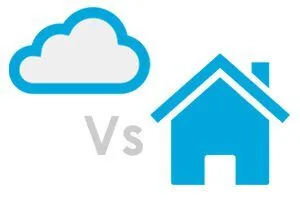Eurostop Offers Top Tips to Retailers for Black Friday 2015 Success

Eurostop publishes paper providing guidance to retailers, based on conversations with its customers Eurostop identified that their retail customers that took part in Black Friday 2014 reported healthy growth figures from participating in the one-day event. This correlates with the official figures, which revealed British consumers spent £810 million pounds during Black Friday, making it the biggest shopping day of the year in 2014. However, retailers need to beware. Increasing turnover at the expense of profit margin is a difficult equation to balance. Planning is paramount and the route to retail success is to become more data aware. Decision-making based on hard data rather than guesswork enables retailers to make the smarter decisions towards higher profits, greater customer satisfaction and sustainable growth. Phillip Moylan, Sales Manager at Eurostop comments; “It is easy to understand why Black Friday has become so popular, consumers benefit from huge discounts on goods and retailers achieve a significant lift in sales and revenue. However, discounted goods and increased profit margins don’t generally go hand in hand. Retailers need a solid strategy to achieve the full benefit from Black Friday.” First arriving to UK shores in 2010, Black Friday is a day when retailers heavily discount goods. The concept grew in popularity and by 2014 most of the major UK retailers participated resulting in a one-day sales frenzy, with consumers spending at the rate of £9,375 per second. Retail analysts are predicting that Black Friday 2015, and its lesser known cousin Cyber Monday, could see sales figures surpass the £1 billon mark. “Retailers who want to improve turnover and profits, must communicate well internally and enable a marketing plan for this event. It is vital that retailers are able to assimilate their retail data into the decision making process. For retailers that don’t have a Stock Control and EPoS solution that can give them the information needed, it might be time to find a new technology partner before missing out on the next biggest shopping day of the year,” Moylan concluded.
Black Friday 2015: How to ensure your business benefits from the biggest shopping day of the year by Phillip Moylan at Eurostop

Official figures revealed that British consumers spent £810 million pounds in 2014 on one single day, making it the biggest shopping day of the year. That day was Black Friday; a US import that British consumers had barely heard of grew in the space of just 4 years into the biggest phenomenon that retailers experienced in decades. If that statement surprises you, you are not alone because whilst many retailers benefited from the surge in sales, with consumers spending at the rate of £9,375 per second, some retailers did not participate, maybe thinking this was a passing fad. However, that decision proved costly for the retailers who were left playing catch up for the remainder of the year, missing out on the much needed revenue bump and resulting in an overall weakening in annual sales revenue. Retail analysts are predicting that Black Friday 2015, and its lesser know cousin Cyber Monday, could see sales figures surpass the £1 billion mark. So far, so great, consumer’s benefit from huge discounts on goods and retailers achieve a significant lift in sales and revenue. However, discounted goods and increased profit margins don’t generally go hand in hand. Here are a few pointers for retailers to consider in their plans to achieve the full benefit from Black Friday. Making a mark If a retailer is planning on taking part in Black Friday they need to ensure consumers know about it! This means having a solid marketing strategy for Black Friday that targets existing customers and develops a new potential customer base by promoting your offers well in advance, both in store and online. Retailers need to think about in store banners highlighting the event, emailing their existing customer base with teaser information and maximising web traffic to their online site through search engine optimisation to drive click through traffic. However, marketing comes at a cost and retailers need to factor this in their overall strategy when participating in Black Friday. Sales strategy Retailers often plan a year in advance their campaign strategy for the important seasonal sales spikes during the calendar year, with Christmas obviously being a key period. With Black Friday occurring so close to the traditional pre Christmas shopping period, with this year falling on 27th November 2015, there are potential ramifications that need to be carefully thought through. It is important for retailers to consider where Black Friday fits in their sales and promotional strategy, it is effectively a one day sales event and there is no guarantee that consumer loyalty will be secured and continue throughout December. Retailers could adopt a strategy of giving promotional vouchers as part of the purchase made on Black Friday giving consumers a % discount on non sale items during December, thereby extending the loyalty period. Alternatively retailers could go with a loss leader, enticing consumers with a heavily discounted item, in the hope that they continue to spend on non-sale items recouping any lost margin. Increasing turnover at the expense of profit margin is a difficult equation to balance; retailers need to decide what they want to achieve from Black Friday, how sales and pricing will impact the business and what their strategy will be. What to sell, when to sell it Retailers generally purchase goods months in advance to ensure sufficient stock levels during peak sales periods. Unlike other seasonal peak periods that have a gradual ramp up before hitting a peak, Black Friday is just a day. Retailers need a strategy for effectively a 24 hour period, striking the right balance between the stock they buy for Black Friday and the margins they want to achieve for the day itself and the remainder of the pre Christmas shopping period. This can leave retailers in a quandary, do they discount a mature product line with the aim of shifting older stock or do they purchase a new product line specifically for Black Friday with the plan of driving footfall towards the non-discounted lines. Retailers may presume that they must dramatically discount significant lines of stock, however they should consider a more nuanced approach that is focused on limited lines available on Black Friday with targeted reductions. This ensures retailers can realise the benefits of increased footfall/traffic on Black Friday itself without damaging their margins and negatively impacting their Christmas results. Boomerang products Retailers are in the business of selling products; returns are inevitable however a poorly conceived returns policy can negatively impact profit. Retailers need to consider what their returns policy will be for Black Friday, to ensure any unwanted rather than faulty goods are returned in a timely manner so the item can be re-sold before the boxing day discount period. Some retailers have previously set a return policy of 2 weeks for unwanted discount purchases made on Black Friday. Retailers need to decide how they will manage returns and may choose to implement a limited time period for returning goods or only offer in store credit note on unwanted purchasers. This of course would not affect a consumer’s statutory rights with regards to faulty goods, as covered under the Sale of Goods Act. Delivering a positive online experience We all love getting a bargain but there is nothing more frustrating than wanting to buy and not being able to. A common complaint amongst online purchasers is the frustration of a website crashing just at the crucial purchase moment or during the browsing process. It is vital that retailers ensure they have sufficient resources in place to handle a surge in online orders and transactions by stress testing their e-tail operation. With Black Friday being a particularly popular event for online retailers there is no shortage of competitors waiting to serve your customer and delivering that positive online service we all want. When it comes to getting a good bargain loyalty can be fleeting, digitally savvy consumers can swiftly take their business elsewhere with just a few clicks of a mouse button. Be prepared and it could be your business benefiting
Keep your options open, Eurostop tells retailers as 75% select cloud-based solutions

Choosing a supplier that offers cloud and in-house IT, frees retailers to concentrate on their core business Eurostop has seen demand for cloud-based retail solutions increase significantly in 2015, with 75% of new customers selecting cloud. In a paper published today, Eurostop suggests that retailers should select a supplier that allows them to keep their hosting options open when considering retail management systems. Retailers should be able to focus on the systems functionality, and not be constrained by the available IT infrastructure, which may require changes with growth and over time. Eurostop’s article entitled; “Keep your options open, Cloud vs In-house. Which one is best?” discusses the benefits of cloud versus in-house systems. It claims that while the cloud provides flexible and scalable IT systems for growth, capital investment on in-house servers provide faster access, better control over data and can result in payback within 18 months. Marcus Ardeman, Sales Executive at Eurostop, said; “As a well-established supplier to the retail sector for over twenty five years, we have seen how customers require varied solutions to support their business at different times. Despite the current trend for cloud, which we are happy to supply, we recommend keeping your options open. “Ideally retail systems should be available either via the traditional local server method or as a full cloud solution. What is important is that retailers are able to remain flexible and adjust as the business requirements grow and change. At Eurostop we ensure that our clients have a choice between cloud and on-premise solutions, which they can change as their businesses evolve.” For retail companies considering subscribing to cloud systems, the main benefits are no reliance on fixed servers, real time access to data, scalability and simple software upgrades. However, some retailers may prefer a local server based infrastructure, due to unreliable ‘internet’ connectivity, for security issues or that is easier to utilise integration tools when all software is stored locally.
Black Friday 2015 – The countdown has begun

Sales on ‘Black Friday’ last year reached elevated levels, and with all the hype surrounding the day, retailers need to make sure that they are prepared to meet demand and customer expectations. Eurostop takes a look at some of the key facts and figures, and what retailers can do to prepare for the 27th November. UK facts ‘Black Friday’ 2014. Online sales increased by 91% per centOnline spending was 37.5 per cent higher than it was during Black Friday 2013, according to statistics from Barclaycard. . Online accounted for 21 per cent of total salesThe BRC said online sales of non-food products grew by 12 per cent in November compared to a year earlier. This led to the highest ever non-food online penetration rate on record, which stood at 21 per cent – or more than £1 in every £5 – in November. Consumers spent 18 per cent more this yearAccording to Barclaycard, consumers spent 18 per cent more than they did on the same day last year. Last year, it said, Black Friday spending was up 21 per cent, with online spending increasing by 41 per cent. Here is a simple checklist to help retailers prepare for the rush and to make sure that they take full advantage of the increased traffic. Ensure that you have accurate stock visibilityMany retailers were caught out by not having adequate stock in stores. Make sure that your merchandise solution is prepared and that you have managed stock to be ready for sale. Update your website to accommodate mobileAccording to IBM over 59.8% of last seasons’ traffic came from mobile devices. Prepare your credit card terminals for increased trafficIf your store is still on a dial-up, consider a move to DSL/Broadband. Prepare your website for increased trafficMany retailers traded from midnight to maximise shopping times and put deals online overnight. Websites including John Lewis, Argos and Tesco Direct struggled to handle the increased traffic. Train store personel in crowd managementDuring ‘Black Friday’ police were called to a number of disturbances at London and Manchester supermarkets as shoppers fought over goods.
Cloud vs Hosted. Does your supplier give you the choice?

‘Cloud’ technology has been talked about since the mid 90s in various terms. Hosted, SAAS (Software as a service) and lately people have embraced the term CLOUD. The NIST (National Institute of Standards and Technology) definition of cloud computing is “cloud computing is a model for enabling ubiquitous, convenient, on-demand network access to a shared pool of configurable computing resources (e.g. networks, servers, storage, applications and services) that can be rapidly provisioned and released with minimal management effort or service provider interaction.” The main benefits that IT companies talk about when selling cloud is the removal of the reliance on fixed servers, real time access to data, scalability and simple software upgrades. Although these benefits are acknowledged within the industry, it is important to consider that with cloud solutions there will be monthly charges whether for the application, the data or both. Dependant on the size of the business, often the payback for implementing a local server is seen within 18 months. It is also important to consider speed of delivery of data. Although we now have the benefit of faster internet connection with leased lines, there will always be a restriction to the speed of the connection whereas with local servers, there would not be this speed consideration. Many software houses have placed all of their development resource into developing purely cloud based solutions which offer all of the above benefits, but have had to implement various fail safes for the rarity of failure of service. However there are still many businesses out there that for many reasons still require a local server based infrastructure. This could be due to ‘internet’ connectivity reliability, security issues or the fact that it is far easier to utilise integration tools when all software is stored locally. As a well-established supplier of merchandise management solutions for over 25 years, Eurostop are fully aware of the various delivery methods that our customers require, and this why our solution can be delivered either in the traditional local server method or as a full cloud solution. Dependant on the estate size, each of these methods has its benefits but what Eurostop enable retailers to do is adjust the method as their requirements grow. A single store retailer may wish to have a hosted platform as they do not have the technical ability or resource to manage a server, backups and upgrades, but as they grow and reach a larger number of locations, they may want to start integrating other packages and therefore want to take the management of our product and data in house. At the other end of the scale a retailer may already have a server array in their business and wish to install our products onto this array. With cloud only solutions it is normally the provider who decides which Hosting provider you will be working with, and this may still mean that you are having to work ‘cross platform’. The most important thing to remember is that it should be the functionality that is most important to your organisation and not how it is delivered; as Eurostop can offer both.
The man at the top – Richard Loh

Richard Loh, Founder and CEO of Eurostop, has a personal motto: “The higher you reach the closer you get to achieving your goals”. It is a maxim that inspired the software entrepreneur to build a global retail systems company with customers and offices in some of the most challenging and emerging markets. Growing up in Malaysia and from a young age, Richard had dreams of becoming an entrepreneur – his incentive was to turn his 10 cents daily allowance into 50 cents, so that he could afford his daily lunch. This motivated Richard to open his first ‘office’, working after school from his home where he sold kites and ice cream, creating his first profitable turnover. At the age of 18, he managed to convince Bata Shoes to let him compete for their Graduate Trainee Programme. There he passed a week of rigorous exams and began as a trainee executive. Richard worked hard and progressed through the ranks from trainee executive to store manager, area manager and finally to head office as a merchandiser. He believes this retail training gave him the discipline needed later in life to successfully develop and build his own business. In 1970, Richard left Malacca, his city of birth to chase his dreams and he headed west for the UK. His first job was at K Shoes as a sales assistant. Twelve months later, he moved to Lady at Lord John as a cashier. Within three years his skills were recognised and he celebrated being appointed Merchandise Director of Lady at Lord John. When Lord John was subject to a takeover, Richard’s career took a new direction. He appreciated the growing potential of IT systems, and took the decision to join Honeywell Bull (who at the time were the fifth largest computer company in the world) as a retail consultant. Here, he established and built on relationships with colleagues that were to later join him at building Eurostop into the company you see today. Richard also worked with many of the Tier 1 clothing and footwear retail companies in the UK gaining important knowledge and experience which was to prove invaluable for what was to be ahead. From shoe seller to software entrepreneur Eurostop was born in 1990. Richard knew now was the time to use his retail experience and set up his own company developing a stock control system for the fashion and footwear industry. Starting with just himself and 2 developers, Richard was determined in his belief that he could design a better system than anything available on the market. With no proven track record his first multi-store customer was won with just a promise and a handshake. Twenty five years later, Eurostop’s internationally renowned EPOS software is used in more than 30,000 fashion, footwear and general merchandise stores across the world. Offices in London, Singapore, and China have been established to service the growing demands for the Eurostop systems. High profile customers include Ann Summers, Anta Sportswear, Aquascutum, Ben Sherman, Charles & Keith, Joseph, Speedo, Trespass, The Face Shop, Vertu, Help for Heroes and Marks and Spencer Franchise. With the blistering pace of technological advancements, Richard continues to keep Eurostop at the forefront of the market with his drive and enthusiasm. His integrated suite of software is constantly developing, with focus today on mobile technology and omni channel. Richard is actively involved in leading the firm’s expanding operation in China where Eurostop’s largest customer, the sports brand Anta Sportswear, has more than 12,000 retail stores. From gaining the trust of potential clients to running an established international business Richard has achieved many of his goals. He now goes out of his way to give others opportunities and help them fulfill their potential.


